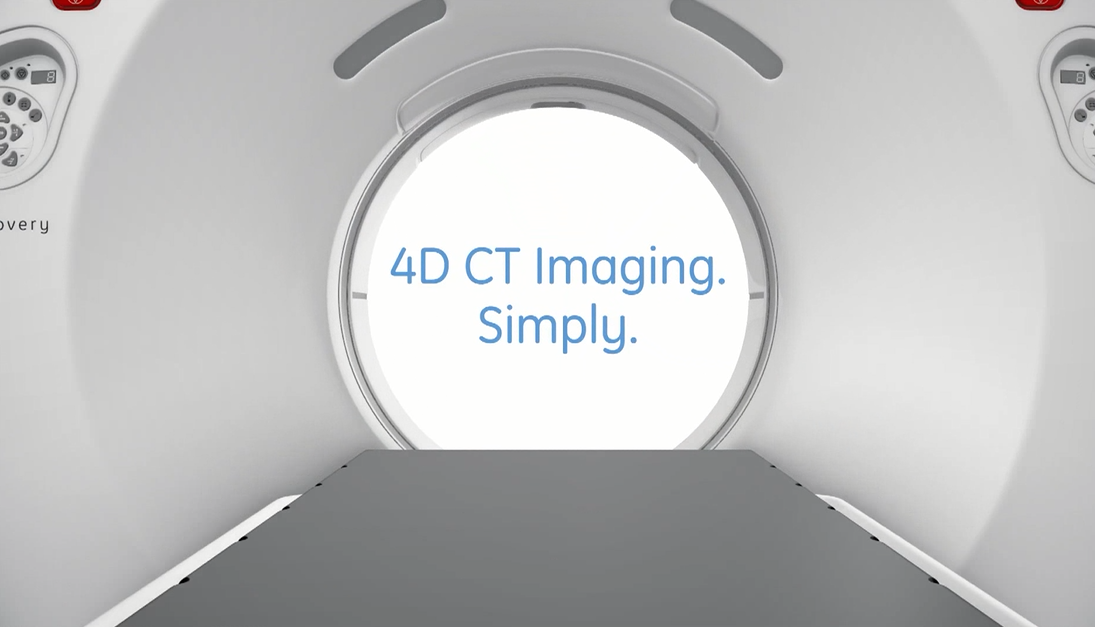|

前言:
近期,University of Texas MD Anderson Cancer Center的Racheal Martin和Tinsu Pan博士在Practical Radiation Oncology 发表了关于GE公司D4D CT技术和使用外置监测装置4D CT技术的对比研究,结论是使用D4D技术得到的4D图像和使用外置监测装置得到的4D图像勾画的IGTV体积无明显差别,数据驱动4D CT能更好的减少伪影,并且扫描流程简单,这是D4D技术突出的临床优势。
Target volume and artifact evaluation of a new data driven 4D CT 一种新的数据驱动的4D CT技术的靶区体积和伪影评估
Rachael Martin BS , Tinsu Pan PhD University of Texas MD Anderson Cancer Center, Department of Imaging Physics DOI: http://dx.doi.org/10.1016/j.prro.2017.01.014 Abstract 摘要
Purpose 目的
4D CT is often used to define the internalgross target volume & #40;IGTV& #41; for radiation therapy of lung cancer. Traditionally,this technique requires the use of an external motion surrogate, however, a newimage data driven 4D CT has become available. This study aims to describe thisdata driven 4D CT and compare target contours created with it to those createdusing standard 4D CT.
4D CT常被用来定义肺癌放射治疗的内靶区体积(IGTV)。一直以来,这种扫描需要使用外置的呼吸监测装置,然而,现在有了一种新的数据驱动的4D CT成像技术。本研究的目的是阐述这个数据驱动的4D CT,并且比较该数据驱动的4D CT和标准4D CT得到的靶区轮廓。 Methods 方法
Cine CT data of 35 patients undergoing SBRT were collected and sorted into phases using standard and data driven 4D CT. IGTV contours were drawn using a semi-automated method onmaximum intensity projection & #40;MIP& #41; images of both 4D CT methods. Errors due to reproducibility of the method were characterized. A comparison of phase image artifacts was made using a normalized cross correlation method which assigned ascore from +1 & #40;data driven “better”& #41; to −1 & #40;standard “better”& #41;.
35位计划做SBRT治疗的患者分别使用标准4D CT和数据驱动4D CT两种方法扫描,并拆分期相。在两种扫描方法的最大密度投影(MIP)图像上使用半自动的方法勾画IGTV轮廓。把方法可重复性带来的误差特征化。采用归一化互相关方法比较相位图像的伪影,评分从+1(数据驱动方法,“更好”)到-1(标准方法,“更好“)。
Results 结果
The volume difference between the data driven and standard IGTVs was not significant & #40;data driven was 2.1 ±1.0% smaller, p = 0.08& #41;. The Dice similarity coefficient & #40;DSC& #41; showed good similarity between the contours& #40;0.949 ± 0.006& #41;. The meansurface separation was 0.4 ± 0.1 mm and the Hausdorff distance was 3.1 ±0.4 mm. An average artifact score of +0.37 indicated the data driven method had significantly fewer and/or less severe artifacts than the standard method & #40;p =1.5e-5 for difference from 0& #41;.
使用数据驱动和标准方法得到的IGTV的体积差别不大(数据驱动方法为2.1±1.0%较小,p = 0.08)。戴斯相似性系数(DSC)表现出轮廓之间良好的的相似性& #40;0.949 ± 0.006& #41;。平均表面分离度为0.4± 0.1 mm,Hausdorff距离为3.1 ± 0.4mm。平均伪影评分为+0.37,说明使用数据驱动方法比标准方法有显著的较少和/或相对轻的伪影& #40;p = 1.5e-5 for difference from 0& #41; Conclusion 结论
On average, the difference between IGTVs derived from data driven and standard was not clinically relevant or statistically significant, suggesting data driven 4D CT can be used in place of standard 4D CT without adjustments to IGTVs. The relatively large differences in some patients were usually attributed to limitations in automatic contouring or differences in artifacts. Artifact reduction and setup simplicity suggest aclinical advantage to data driven 4D CT.
平均而言,使用数据驱动或者标准方法得到的IGTV的差异没有临床相关的或统计学意义,这提示我们数据驱动4DCT能够替代标准4D CT。少数患者相对较大的差异通常归因为与自动勾画轮廓的限制和伪影的差异。数据驱动4D CT能更好的减少伪影,并且扫描流程简单,这是D4D技术突出的临床优势。
|